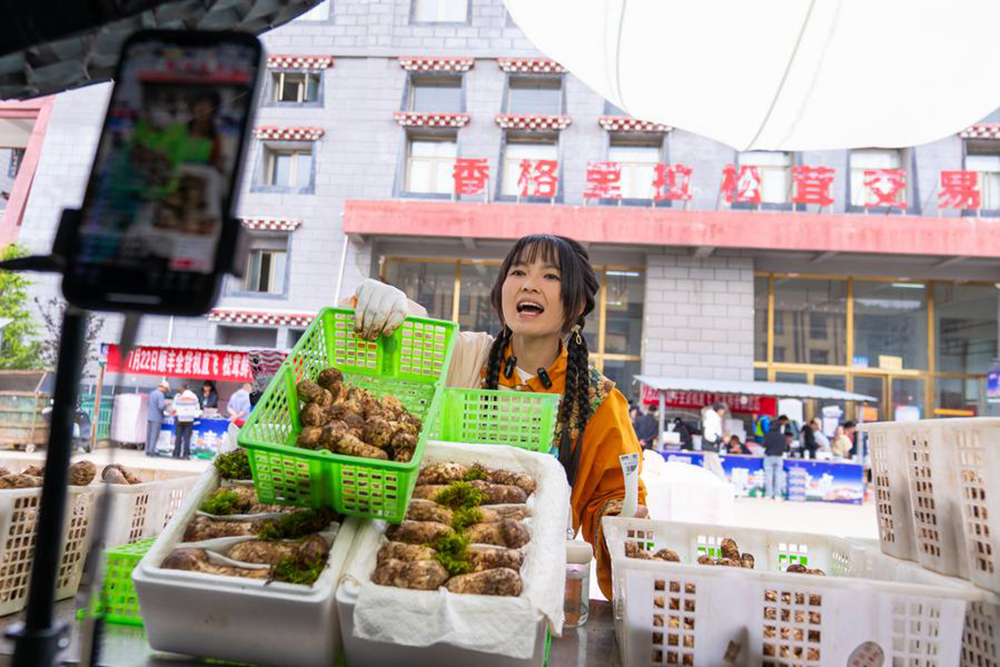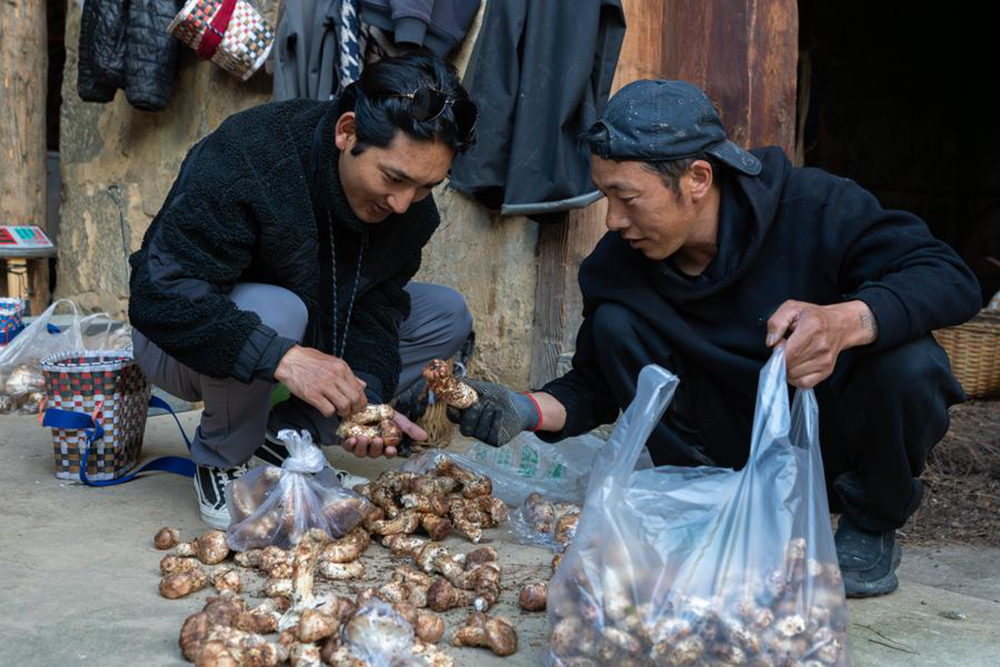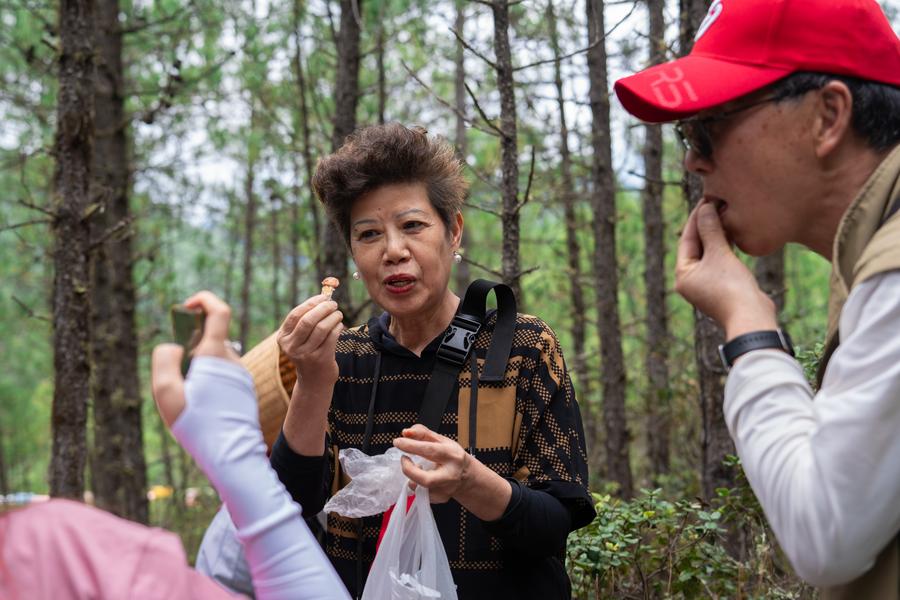A little past 3 a.m., lights flicker on in Tibetan homes in Jidi village, Shangri-La, Yunnan.
Soon after, villagers grab baskets, sticks, and flashlights. They strap everything onto motorcycles and ride toward the misty mountains, 3,000 meters above sea level. Their mission is simple: pick matsutake, a prized wild mushroom.
At the same time, smartphones are changing traditions. With these devices, more villagers now record short videos and go live online. They have become modern “matsutake hunters,” sharing their mountain life with viewers everywhere.

Interestingly, Jidi means “land of prosperity and peace” in Tibetan. The village, perched among snow-capped peaks, is part of Jiantang Township in Shangri-La. Every year, from July to September, the matsutake season transforms the once-quiet settlement. Suddenly, both experienced and first-time pickers stream into the forests, chasing the treasured mushroom.
Meanwhile, the local market bustles with energy. “Fresh from the mountains! What you see is what you get. Order now for same-day shipping,” calls Wu Xia, 22, during her livestream from the Shangri-La matsutake market. Dressed in traditional Tibetan attire, she greets her viewers warmly.
Behind her, a team of young couriers—mostly born in the 1990s and 2000s—works nonstop. They sort, pack, and label boxes at high speed. As a result, the freshly picked mushrooms travel quickly from the highlands to dinner tables across the country. In fact, Wu’s livestreaming lasts until late at night, attracting over 110,000 viewers and earning nearly 120,000 yuan.
More locals are finding new opportunities. Some focus on online mushroom sales. Others branch out into travel services. More tourists now want to pick mushrooms themselves rather than just buy them.

By 7:30 a.m., Su Mingxue, a bright-eyed tour guide, gathers a small group of adventurers. Instead of heading to a famous landmark, they travel to a quiet hill outside Kunming in southwest Yunnan.
Su leads them on a one-day “mushroom-hunting” trek. As they hike, the group delights in discovering wild mushrooms among the damp soil and moss. This hands-on adventure, therefore, offers both nature and novelty. Not surprisingly, such foraging tours have surged in popularity during Yunnan’s summer tourism season. In fact, many visitors now travel here specifically for the experience.
Importantly, Yunnan’s natural wealth makes these trips especially rewarding. Known as China’s “kingdom of plants,” the province’s rich biodiversity supports about 900 species of edible wild mushrooms—over 90 percent of the country’s total. Locals cherish them as seasonal delicacies.
For Su and her husband, who have run a wild-mushroom business in Kunming for years, the tours grew naturally. Each summer, their sales flourish as the rainy season coaxes fungi from the earth.
Earlier this year, however, customers began asking for more than just purchases. They wanted to forage themselves. Consequently, Su organized a trial tour and posted photos and videos online. To her surprise, the posts drew thousands of curious netizens. Encouraged by this response, she officially launched mushroom-picking tours as a new branch of her business.
Today, these excursions typically last half a day or a full day. For safety and enjoyment, Su always partners with seasoned locals to guide the group. As a result, participants feel secure while exploring nature. Moreover, the novelty of the tours has made them especially popular among young travelers eager for authentic experiences.
In recent years, Yunnan’s wild mushrooms have also gone viral on social media, both at home and abroad. Food lovers, for example, call them “magic mushrooms” for their exquisite flavor—while warning that improper cooking can lead to hallucinations.
From dawn pickers in Jidi to weekend adventurers near Kunming, Yunnan’s mushroom season continues to inspire both tradition and innovation—bridging local culture with modern tourism.
Written by Yi Shen, additional reporting by China Daily and Xinhua.
If you liked this article, why not read: Step Into the Clouds: Visiting Guizhou’s Huajiang Canyon Bridge






XxjpsgC007116_20250211_PEPFN0A001.jpg)




